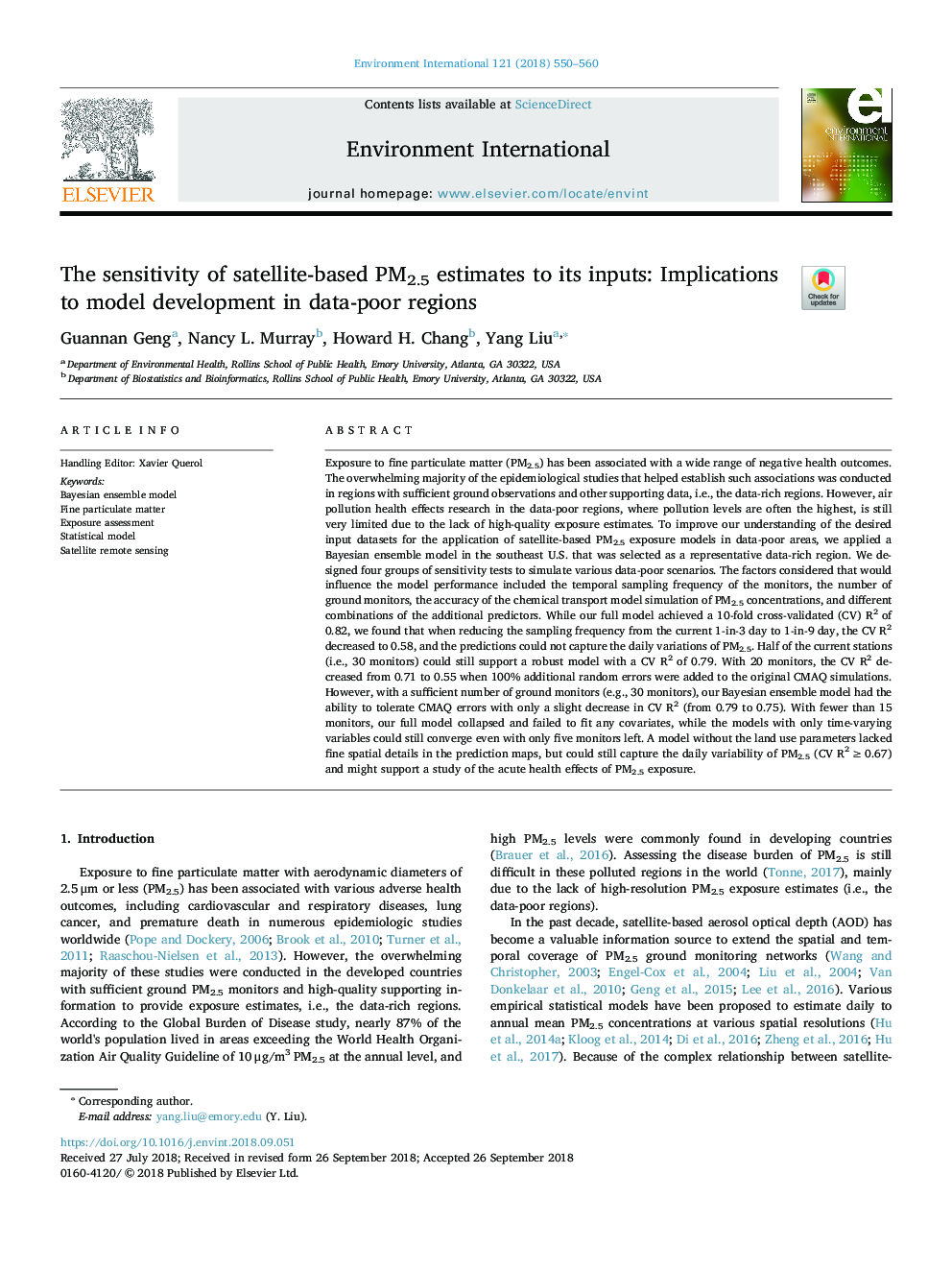| کد مقاله | کد نشریه | سال انتشار | مقاله انگلیسی | نسخه تمام متن |
|---|---|---|---|---|
| 11030455 | 1646304 | 2018 | 11 صفحه PDF | دانلود رایگان |
عنوان انگلیسی مقاله ISI
The sensitivity of satellite-based PM2.5 estimates to its inputs: Implications to model development in data-poor regions
دانلود مقاله + سفارش ترجمه
دانلود مقاله ISI انگلیسی
رایگان برای ایرانیان
کلمات کلیدی
موضوعات مرتبط
علوم زیستی و بیوفناوری
علوم محیط زیست
شیمی زیست محیطی
پیش نمایش صفحه اول مقاله

چکیده انگلیسی
Exposure to fine particulate matter (PM2.5) has been associated with a wide range of negative health outcomes. The overwhelming majority of the epidemiological studies that helped establish such associations was conducted in regions with sufficient ground observations and other supporting data, i.e., the data-rich regions. However, air pollution health effects research in the data-poor regions, where pollution levels are often the highest, is still very limited due to the lack of high-quality exposure estimates. To improve our understanding of the desired input datasets for the application of satellite-based PM2.5 exposure models in data-poor areas, we applied a Bayesian ensemble model in the southeast U.S. that was selected as a representative data-rich region. We designed four groups of sensitivity tests to simulate various data-poor scenarios. The factors considered that would influence the model performance included the temporal sampling frequency of the monitors, the number of ground monitors, the accuracy of the chemical transport model simulation of PM2.5 concentrations, and different combinations of the additional predictors. While our full model achieved a 10-fold cross-validated (CV) R2 of 0.82, we found that when reducing the sampling frequency from the current 1-in-3 day to 1-in-9 day, the CV R2 decreased to 0.58, and the predictions could not capture the daily variations of PM2.5. Half of the current stations (i.e., 30 monitors) could still support a robust model with a CV R2 of 0.79. With 20 monitors, the CV R2 decreased from 0.71 to 0.55 when 100% additional random errors were added to the original CMAQ simulations. However, with a sufficient number of ground monitors (e.g., 30 monitors), our Bayesian ensemble model had the ability to tolerate CMAQ errors with only a slight decrease in CV R2 (from 0.79 to 0.75). With fewer than 15 monitors, our full model collapsed and failed to fit any covariates, while the models with only time-varying variables could still converge even with only five monitors left. A model without the land use parameters lacked fine spatial details in the prediction maps, but could still capture the daily variability of PM2.5 (CV R2â¯â¥â¯0.67) and might support a study of the acute health effects of PM2.5 exposure.
ناشر
Database: Elsevier - ScienceDirect (ساینس دایرکت)
Journal: Environment International - Volume 121, Part 1, December 2018, Pages 550-560
Journal: Environment International - Volume 121, Part 1, December 2018, Pages 550-560
نویسندگان
Guannan Geng, Nancy L. Murray, Howard H. Chang, Yang Liu,